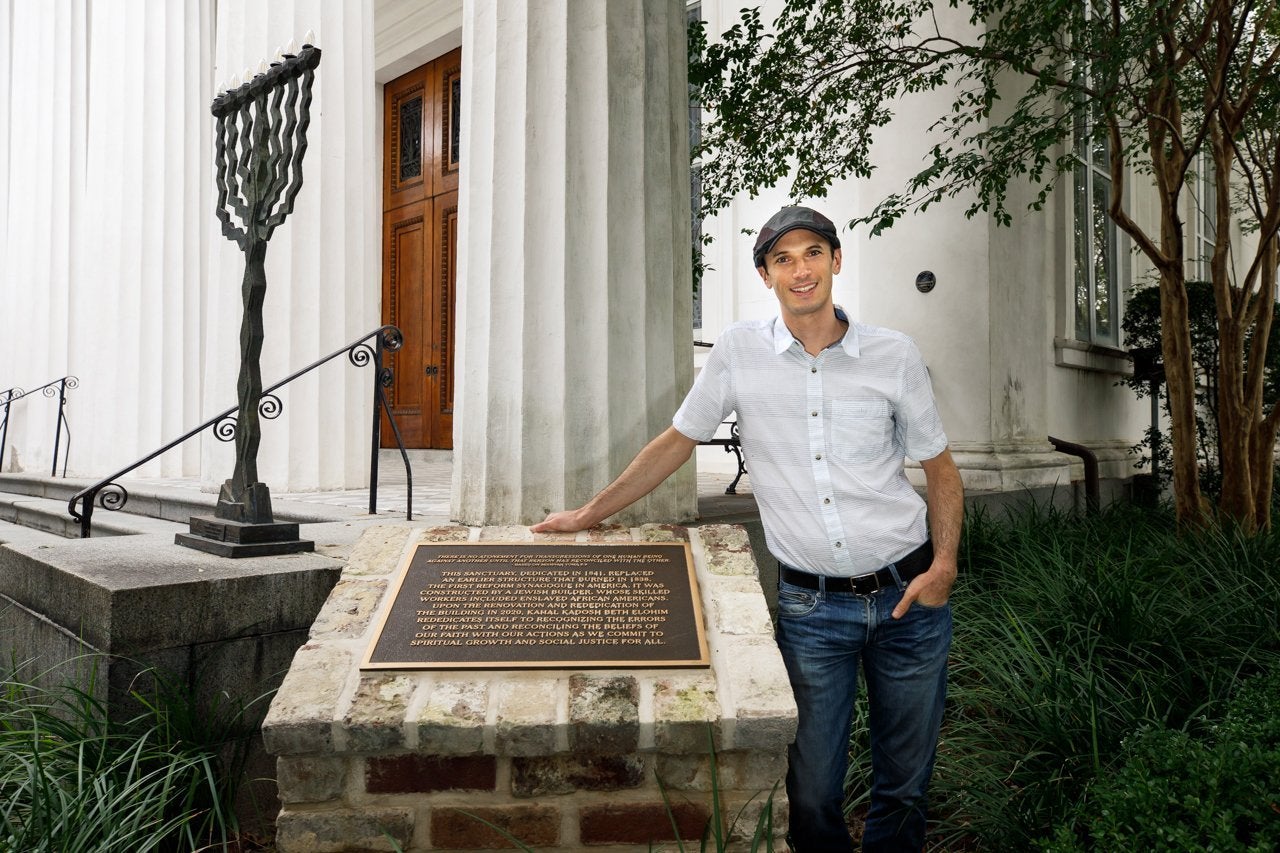It’s well known that many buildings around Charleston, including some on the College of Charleston campus, were built with the unpaid labor of enslaved Africans. But it still came as a bit of shock when Barry Stiefel, associate professor of historic preservation and community planning at the College, revealed in a 2012 American Jewish Archives Journal article that Kahal Kadosh Beth Elohim (KKBE) – the first Reform synagogue in the nation – is among those buildings.
As detailed in Stiefel’s article, “David Lopez Jr.: Builder, Industrialist, and Defender of the Confederacy,” the KKBE was built from 1839–41 by the prominent Charleston builder, David Lopez, through enslaved carpenters.
“The work they did was stunning,” says Stiefel, noting that while Lopez was “the most significant Jew in respect to Charleston’s built environment to take advantage of the post 1838 building boom,” only two of the enslaved laborers instrumental in the construction of KKBE are known: Kit and George. “It’s mind-blowing when you look at historic photographs and see the entire structure was built without modern technology – wooden joints and wooden pegs were used, with plaster attached to lath slats. The synagogue was built so well that it survived the earthquake of 1886.”
If the earthquake didn’t shake the synagogue, Stiefel’s findings did.
So, how does a university, historic plantation or a house of worship take steps toward reconciling their role in the injustices of slavery? It’s hard to know where to begin, but acknowledging that past is a good place to start.
In September, KKBE did just that with a historic plaque on a brick monument. Members of the Reform Judaism congregation drew from Stiefel’s research to inform the plaque’s wording and their plan for reconciliation.
Stiefel commends KKBE for formally acknowledging this history, but he wants more recognition of Kit, George and the many unknown laborers involved in constructing many Charleston buildings that still stand today.
“Serious soul searching, reflection and community building across racial and ethnic divisions will have to happen for any kind of reconciliation,” says Stiefel. “Actions that provide socioeconomic, educational and environmental justice are needed to address the problems that systemic racism has created. A plaque is a step forward, but we also need to focus on the full marathon that needs to be traveled toward a better future.”
It’s not an easy journey – something that Stiefel understands from his work at the Auschwitz Jewish Center in Poland, where he studied “preservation-related research projects that intersected with justice and reconciliation in relation to the Holocaust. It was a life-changing and purpose-making experience, especially considering that family members of mine had perished at Auschwitz,” he says. “It’s important that we, too, participate in fostering justice and reconciliation here in the United States with African Americans and others who have endured slavery and other great acts of oppression.”




